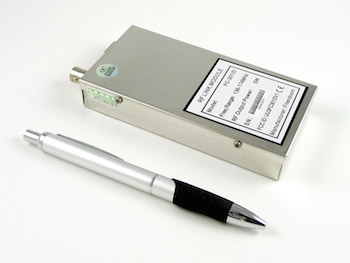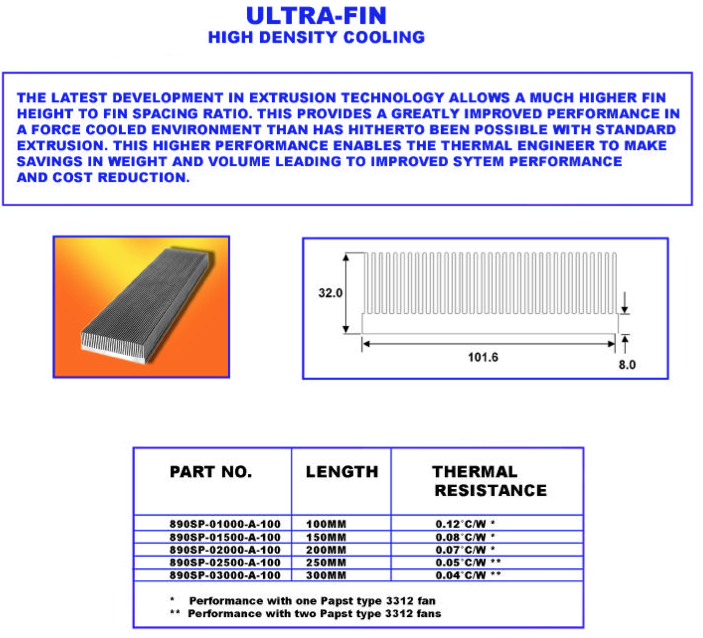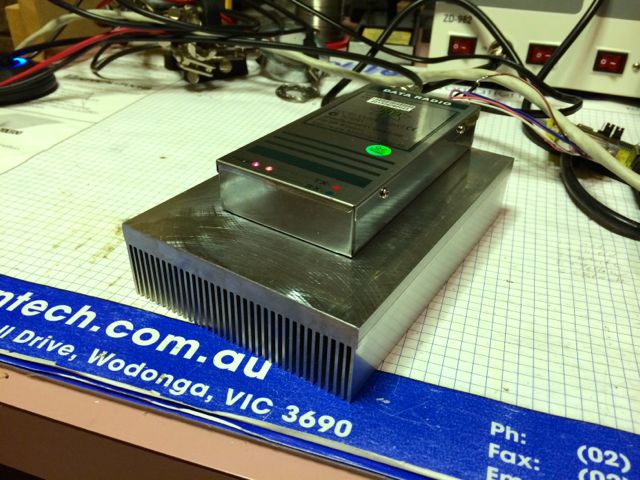The FC301 is a very well priced and simple data radio made by Friendcom in China. With direct access to it's discriminator and 5W RF output it is an ideal candidate for Amateur Radio data projects such as D-Star hotspots and mini repeaters.

The Problem
The first time I used my FC301D radio in a D-Star Hotspot situation I was very surprised about the amount of heat it generates. So I thought reducing the output power to 1W will resolve the heat problem.
Unfortunately the radio gets just as hot on 1W as is does on 5W (non scientific measurement, hand on radio @1W feels much too hot for my liking), so I found that some sort of heatsink is essential. Other than it's housing, the radio appears to have very little heat dissipation capability. Is that a shortcoming of the design?
Maybe, but the FC301 and most other data radios are designed for long standby times and very short transmission bursts (as is typical for data applications), with a general duty cycle of <5%.
The FC301 spec states 5:5:90 (TX:RX:Standby) - that translates into: Transmitting: 3min/hr Receiving: 3min/hr Standby:54min/hr (i.e. no signal received)
The way Amateur Radio operators are using the FC301 as part of a hotspot or mini repeater it typically ends up with a 95% and higher duty cycle! The worst case scenario occurs when the hotspot is linked to a reflector and the operator listens to a net or similar constant transmission. That type of operation is way outside the manufacturer's specification and will lead to premature failure unless we take adequate preventative measures such as fitting suitable heatsinks.
The Solution
My 2mt FC301 draws 1.3A at 12V which is around 16W. About 5W exits the radio as RF but the remaining 11W are turned into heat. Armed with this information I went in search of a heat sink and ended up with a HS Marston 890SP-01500-A-100.

The HS Marston heatsink has a thermal resistance of 0.08ºC/W (I later found out that figure requires a fan on the heatsink!)
We don't know the thermal resistance between the output stage and radio housing and between the housing and the heatsink, so for the purpose of this exercise I'll make an assumption of 0.2ºC/W for both those variables.
If the radio dissipates 11W of heat and it needs to run in a 40ºC environment ( summer time ) the calculation looks something like this:
40+11*(0.08 + 0.2) = 43.08ºC - that's not too bad, less than 4ºC above ambient is a nice operating temperature and will give the FC301 a long life.
However, this calculation is based on the heatsink having a fan - depending on final installation location it might need a thermostat (set to 40ºC) controlled fan to achieve the calculated figures.
The Result
Without thermal transfer paste and radio placed on top of the heatsink, as seen in the picture below, the FC301 does not get warm, it appears to remain within a degree or two of ambient temperature. Even on 95% duty cycle (e.g. listening to a net) the FC301 stays cool as a cucumber.
In hindsight, this heatsink is probably overkill but it will keep the FC301 as cool as one can hope when it has to operate on a hot sumer day with ambient temperatures well over 40ºC.
